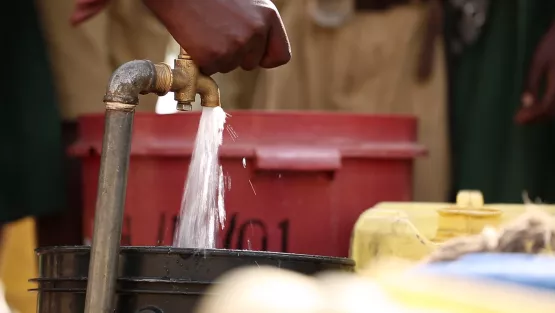Innovation platforms aim to speed the pace of technology transfer in the water sector
Today’s water utilities are stuck between a rock and a hard place. The impacts of climate change, the needs of growing and increasingly urban populations, and the realities of the largest economic crisis seen in more than a century all demand that they do more with less. , all while operating in an economically constrained environment that has slowed investments in the water sector worldwide.
Meanwhile, a wide variety of technology solutions are available to help utilities solve these urgent challenges: from trenchless automated leak repair technologies that can find and fix buried pipe leaks without the need for invasive and expensive excavation works, to artificial intelligence that can predict the risk of failures and leaks in water distribution networks, to an autonomous microbiology analyzer for in situ water quality monitoring. So why is it that these solutions are not deployed more widely?
An analysis of the innovation ecosystem in the water sector found that it frequently fails to effectively bring the know-how of innovators together with potential end-users. So, although we are living in an age of unprecedented technological innovation, sometimes referred to as the Fourth Industrial Revolution, and new technologies abound in the water space, adoption among WSS utilities has been slow. Utilities across the globe, and especially those in emerging economies, are missing out on opportunities to deploy technology solutions that could drastically improve safety, water efficiency, utility operations, and monitoring and treatment. Ultimately, they are missing out on the ability to harness new technologies to be able to do more with less. This disconnect can be explained in part by a deficit of information on existing technologies and the potential benefits such technologies can bring, creating a supply-demand information gap.
To address this, based on the utilities’ key challenges, then facilitate technology adoption. To date, two WIPs have been launched in Africa and Latin America and the Caribbean. Following an initial selection of WIP participants for each region, a technology needs assessment was carried out to identify both the challenges faced by utilities that could be addressed by a technological solution, as well as the broader ecosystem challenges of accessing and scaling new technologies within local WSS markets.
In Africa, utilities zeroed in on two key priorities: energy demand reduction and the reduction of non-revenue water (NRW), which is essentially water that is lost somewhere in the water distribution system that either never reaches its destination or is not billed. In Latin America and the Caribbean, utilities pointed to identifying and repairing leaks alongside deploying internet of things (IoT) solutions for real-time system monitoring as their top priorities.
These findings informed the selection of a cross-section of technology solution providers. In a participatory process, the utilities voted to determine which companies were invited to present their technologies directly to WIP members.
The next step, the most challenging to date, is to select utility-technology matches in each region that will receive more targeted support on technology adoption. Lessons learned from previous efforts in this space revealed that although initiatives are often successful in connecting technology companies and utilities, translating this interest into a technology pilot is a major challenge. To pre-empt this, the initial matchmaking is extremely focused, targeting three utility-technology pairs in each region. By keeping the initial cohort small, the World Bank can provide more tailored support and ensure utilities’ capacities can support their ambitions.
Ultimately, the goal of WIP is to support WSS utilities to leverage technological innovation to meet the challenges inherent in today’s operational environment. Rock, no matter how hard, is no match for water, which always finds a way, eventually carving a smooth path forward.








Gloss